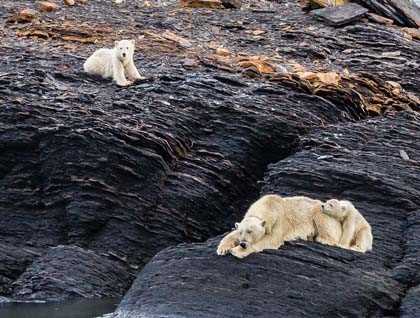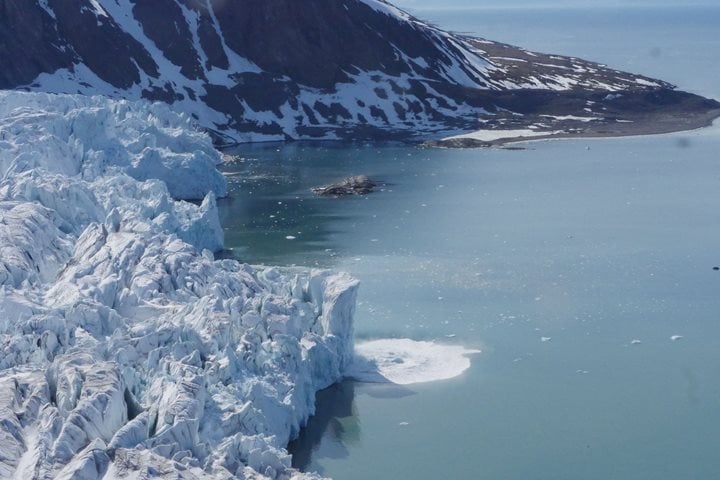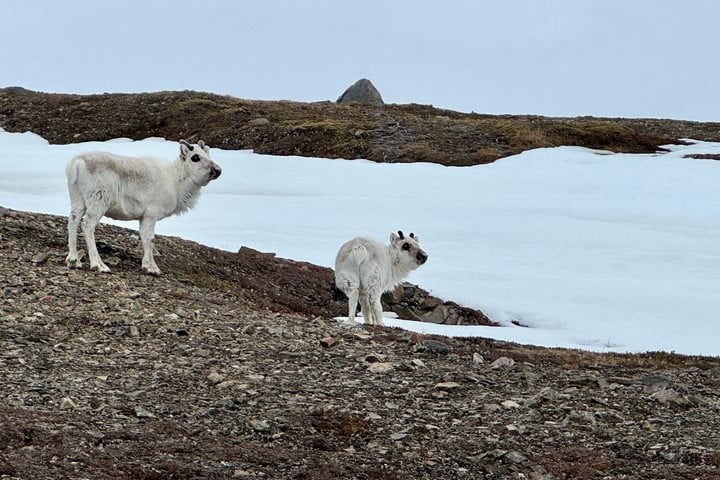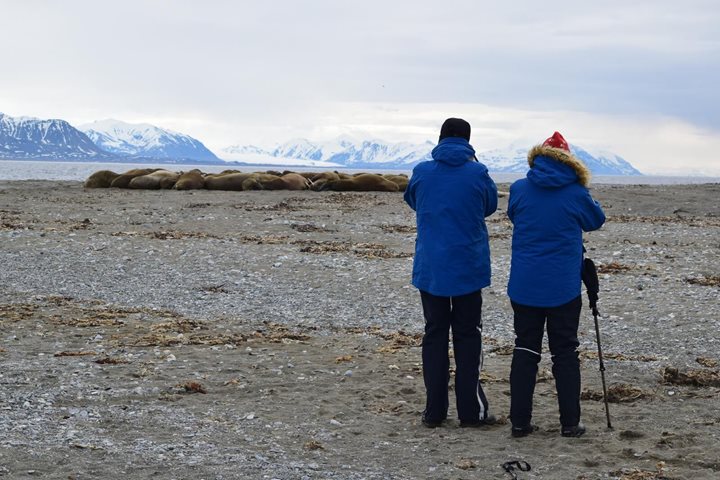Look for the bear necessities,
The simple bear necessities,
Forget about your worries and your strife…
I mean the bear necessities,
Are Mother Nature’s recipes,
That bring the bear necessities of life!
—Baloo from "The Jungle Book"
There are good mornings here in the high Arctic, and then there are beary, beary good mornings! All bear puns aside, for all on board the National Geographic Explorer this morning was exceptional! Well before breakfast, expedition leader Bud Lehnhausen made the announcement over the PA that keen eyes on the bridge had spotted an ice bear sow and her two COY (Cubs-of-Year) at Horn Holmen. Excited bear enthusiast tumbled out of their bunks, gathered warm clothing, binoculars, and of course cameras, and shuffled out on the open decks to take in the wonder and beauty of the very symbol of the Arctic. Mom seemed totally unconcerned as the ship inched in ever closer to the three bears, finally coming to a stop at a proper viewing and photography distance. Cameras clicked and whirred as gigabyte after gigabyte of picture book bear photos were taken.
Leaving the three polar bears just as we had found them, the National Geographic Explorer continued on to Brepollen where sharp eyes again detected another adult ice bear, this time swimming amongst the calved ice near the glacier. This particular adult was a champion swimmer and covered quite a distance when we spotted yet another mother and her COY further on in the fjord. This mother bear proceeded to exit the sea with her cub following and climb the lateral moraine, much to the delight of all aboard. Six polar bears, three of them COY, and we had only been awake for three hours!
Afternoon found us going ashore at Gäshamna (Goose Bay) on the southern shore of Horn Sound. This site is an exceptional archaeological record of early 17th century British whalers, who left behind many skulls and lower mandibles of Greenland right whales (today simply known as bowhead whales) that they slaughtered, and then processed at this site. In less than fifty years these whales had become commercially extinct, but the remnants of blubber ovens and tri works are testament to an industry now extinct on these shores.
Built on top of the whaling site are the remains of the 1899 Swedish-Russian Arc de Meridian expedition, which overwintered that year in order to take precise astronomical measurements of latitude and longitude along a meridian to determine if the Earth was actually flattened at its poles, rather than a perfect sphere. Cooperation between the Swedes to the north, and the Russians here in Gäshamna revealed that the Earth was indeed an oblate spheroid. Further meandering afield brought close up looks at young Svalbard reindeer grazing on flowering purple saxifrage, Arctic skuas defending nest sites, and black-legged kittiwakes whirring above our heads.
A beary good day indeed!







